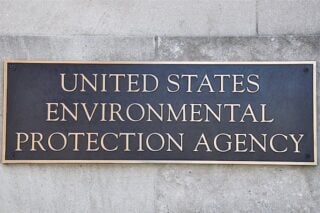New research from the University of Iceland, the Administration for Occupational Safety and Health, and the Center for Health Security and Communicable Disease Control shows mesothelioma cases continue to rise in Iceland despite the country’s 1982 ban on asbestos. Cases of malignant mesothelioma increased from 1965 to 2014, but this was expected.
“In line with the previously high per capita volume of asbestos import, many buildings, equipment, and structures contain asbestos, so there is an on-going risk of asbestos exposure during maintenance, renovations, and replacements,” said Kristinn Tomasson, Occupational Medicine Specialist, Administration of Occupational Safety and Health.
“It is thus difficult to predict when the incidence of malignant mesothelioma will decrease in the future,” stated Tomasson. This is also due to the latency period where the decreased use of asbestos may not become apparent until several decades later.
The study also showed that Iceland had a higher rate of mesothelioma than its neighboring countries based on data from the Icelandic Cancer Registry, the National Cause-of-Death Registry, and the National Register. Because the country doesn’t have asbestos mines, the import figures were deemed very accurate.
From the results, 79% of the cases of malignant mesothelioma were men and 72% were of pleural origin. The incidence rate increased from 1965 to 2014 when 21.4 per million cases were among men and 5.6 among women. In 2014, the death rate was 22.2 per million among men and 4.8 among women.
Iceland was actually the first country to ban asbestos followed by Norway and Sweden. In Sweden, a similar study was conducted, but the results showed the ban on asbestos there was actually reducing the occurrence of pleural mesothelioma. It’s considered the first convincing study showing a decreased occurrence of asbestos-related diseases due to a ban.
With the Swedish study, men and women born 1955 to 1979 had a decreased risk of malignant pleural mesothelioma compared to men and women born from 1940 to 1949. This decrease prevented 10 cases annually in men and two in women below the age of 57 years in 2012.
According to the Journal of Occupational Health, “Since Iceland first introduced a ban on all types of asbestos in 1983, more than 50 countries have implemented similar bans. However, the pace of countries adopting bans has slowed in the past decade. Indeed, the governments of several industrializing countries have withdrawn bans while others have prescribed long periods over which to move towards a ban.”
Nine of the ten most populated countries in the world, all of which use or have used substantial amounts of asbestos, still have not adopted bans. As result, coverage of the world population by bans remains low and is biased towards industrialized countries.
The Lautenberg Chemical Safety Act is the best bet for implementing a ban in the U.S. Signed on June 22 of this year, the act gives the Environmental Protection Agency (EPA) more authority to regulate chemicals effectively and reduce asbestos exposure.





